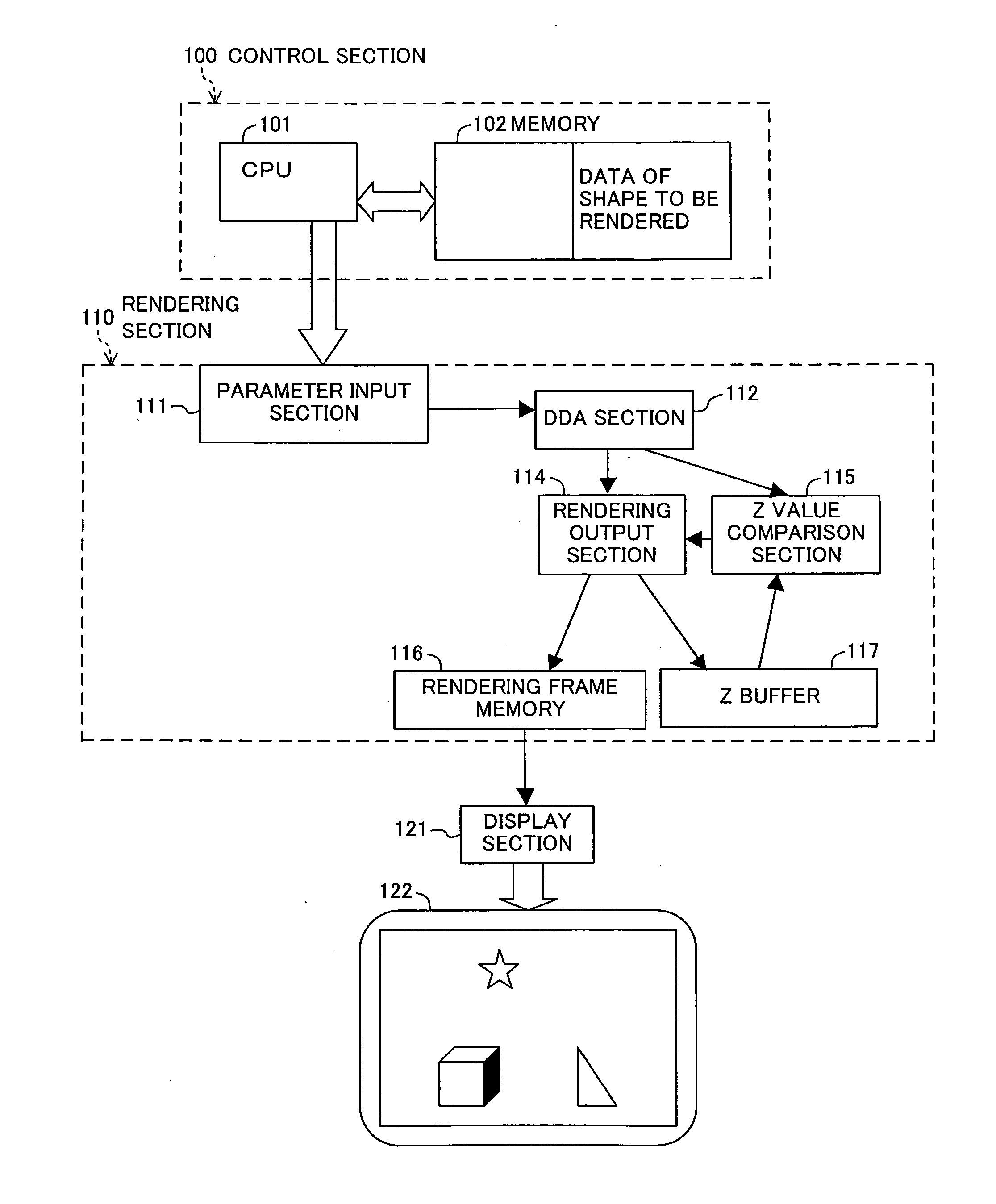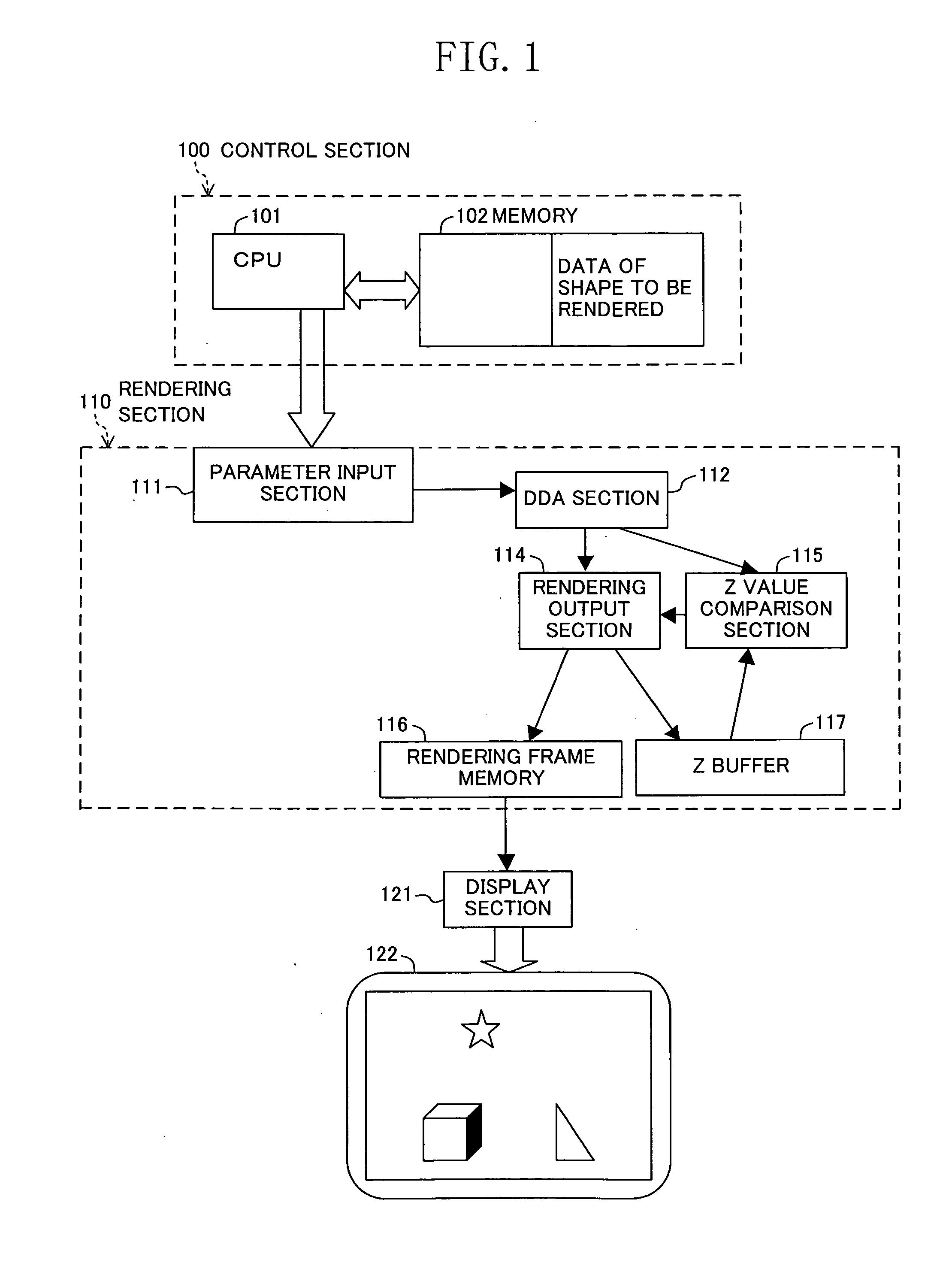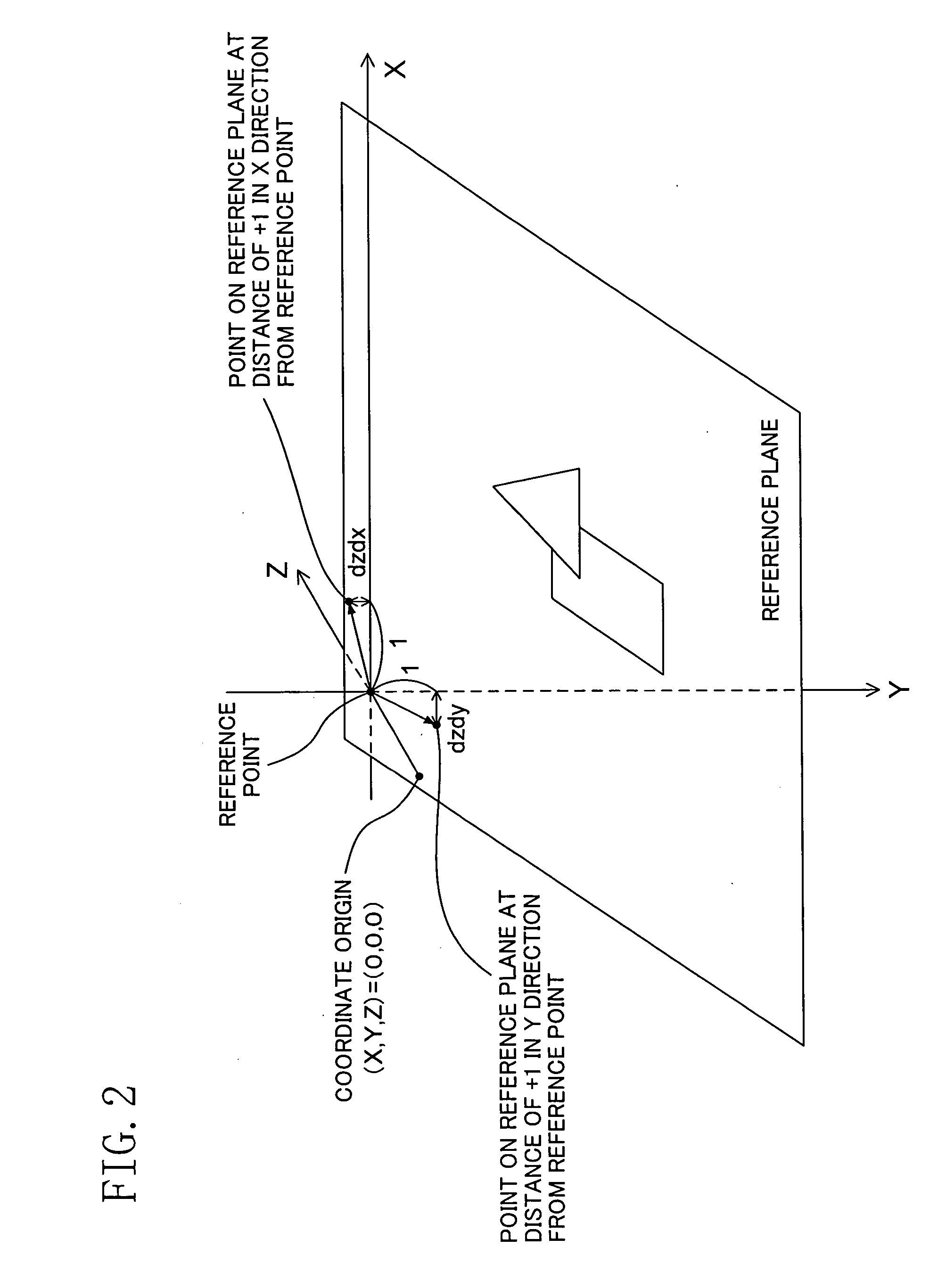Computer graphics rendering method and apparatus
a computer graphics and rendering method technology, applied in the field of computer graphics rendering methods and apparatuses, can solve problems such as non-uniform color gradations between, and achieve the effect of accurate overwriting
- Summary
- Abstract
- Description
- Claims
- Application Information
AI Technical Summary
Benefits of technology
Problems solved by technology
Method used
Image
Examples
first embodiment
[0049]FIG. 1 shows a general configuration of a computer graphics rendering apparatus of the present invention.
[0050] Referring to data of shapes to be rendered stored in a memory 102, a CPU 101 of a control section 100 specifies a reference plane including the shapes based on the shape data, and calculates, as parameters, the Z value Zstart of a predetermined reference point on the specified reference plane, the amount dZdX by which the Z value changes for a +1 move in the X direction on the reference plane, and the amount dZdY by which the Z value changes for a +1 move in the Y direction. The calculated parameters are input to a parameter input section 111 of a rendering section 110.
[0051] Where the point (X, Y)=(0, 0) is defined as the reference point on the reference plane, for example, the reference point is the intersection between the Z axis and the reference plane as shown in FIG. 2. The following description is based on this assumption.
[0052] The reference plane may be s...
second embodiment
[0075] A second embodiment of the present invention will now be described.
[0076] In the preceding embodiment, the Z value to be used for hidden surface removal when rendering a three-dimensional image is calculated based on the same algorithm irrespective of the type of a shape to be rendered. In the present embodiment, instead of the Z value as in the first embodiment, the transparency and the color of each point of a shape to be rendered are calculated based on the same algorithm irrespective of the type of a shape to be rendered, whereby there will be a uniform change in transparency and a uniform change in color among different shapes rendered, thus realizing a desirable stereoscopic effect.
[0077] In the present embodiment, instead of Zstart, dZdX and dZdY as in the first embodiment, the following values are first obtained: the transparency value αstart of a given reference point on a reference plane (it is assumed herein that the reference point is where (X, Y)=(0, 0)), the a...
PUM
 Login to View More
Login to View More Abstract
Description
Claims
Application Information
 Login to View More
Login to View More - R&D
- Intellectual Property
- Life Sciences
- Materials
- Tech Scout
- Unparalleled Data Quality
- Higher Quality Content
- 60% Fewer Hallucinations
Browse by: Latest US Patents, China's latest patents, Technical Efficacy Thesaurus, Application Domain, Technology Topic, Popular Technical Reports.
© 2025 PatSnap. All rights reserved.Legal|Privacy policy|Modern Slavery Act Transparency Statement|Sitemap|About US| Contact US: help@patsnap.com



